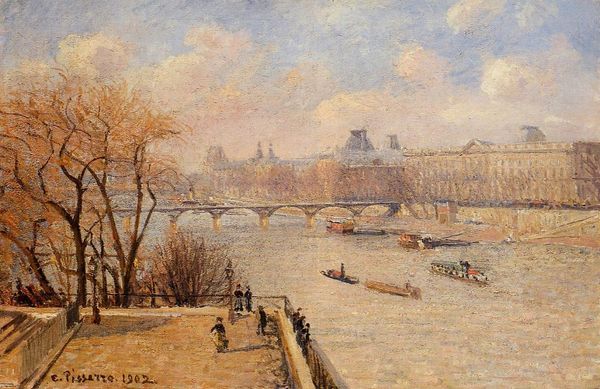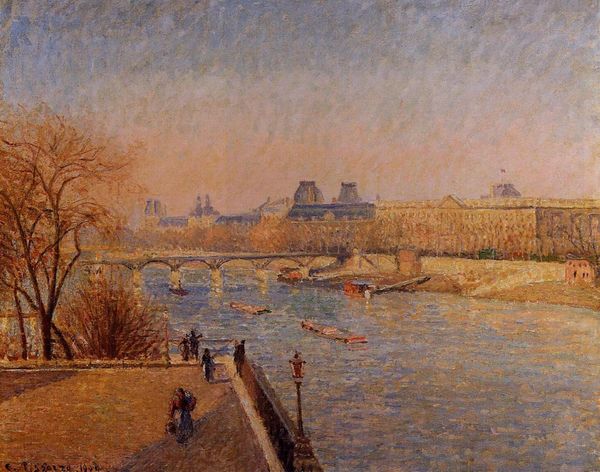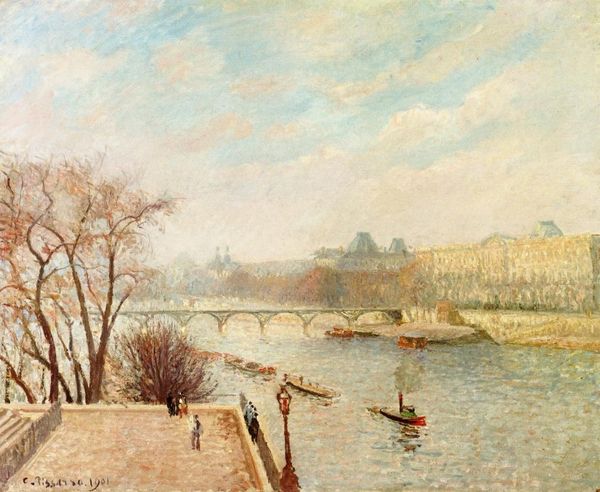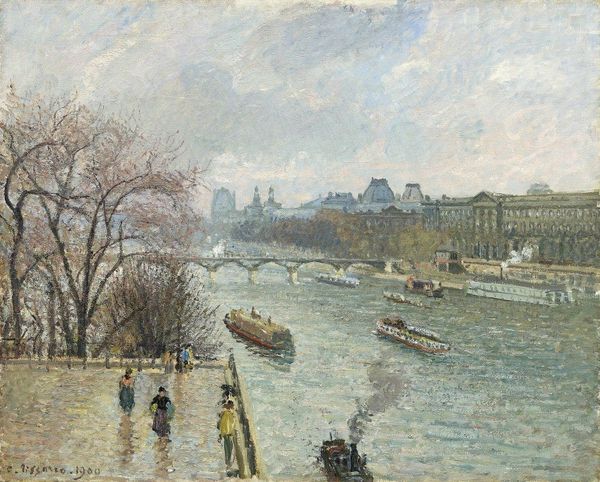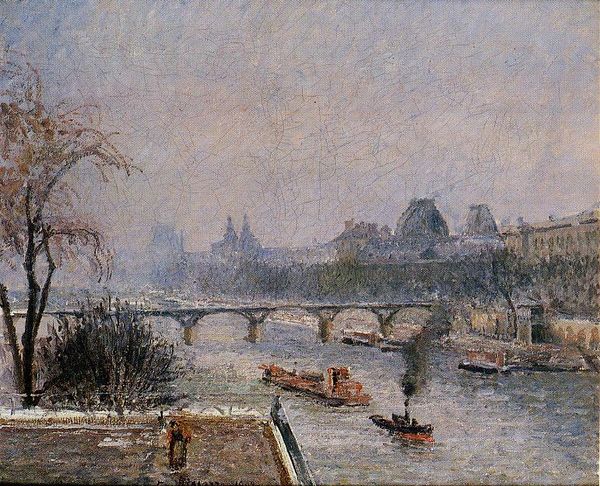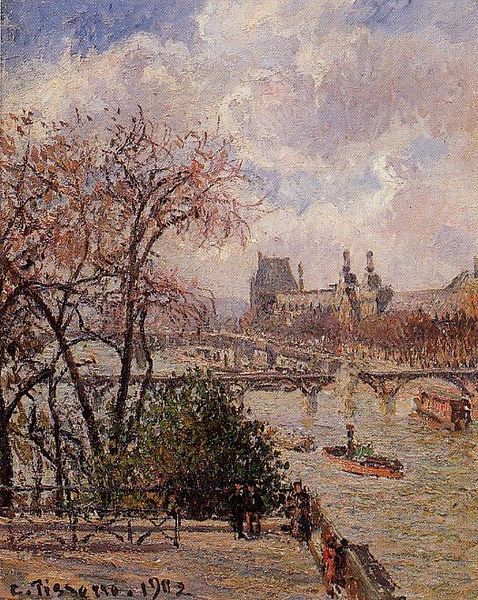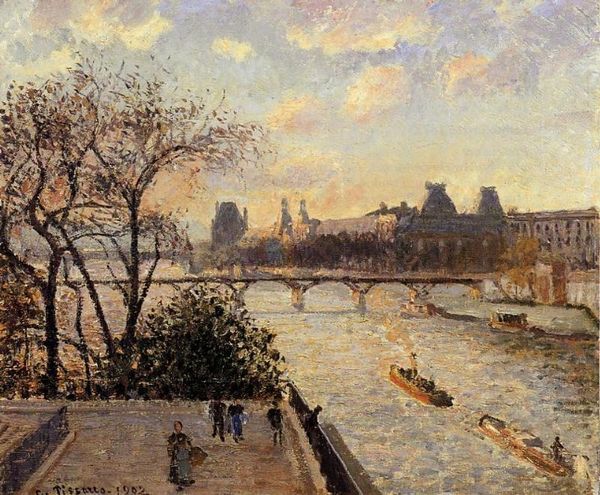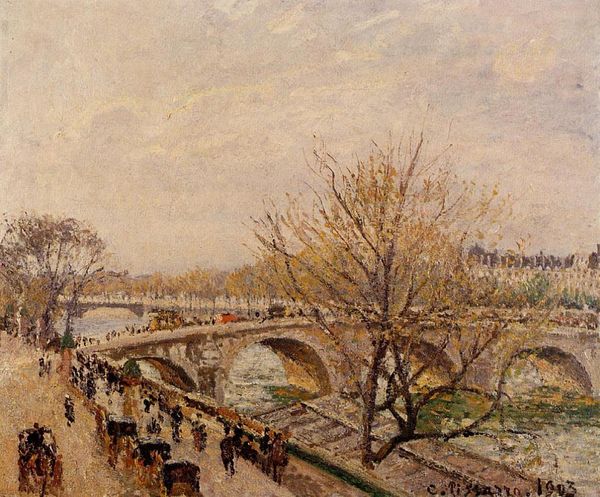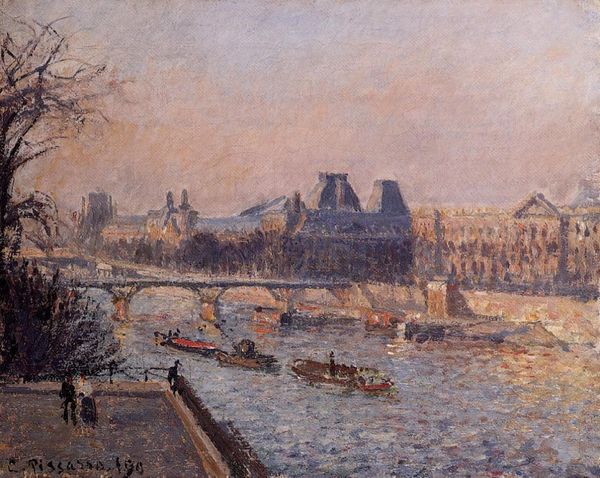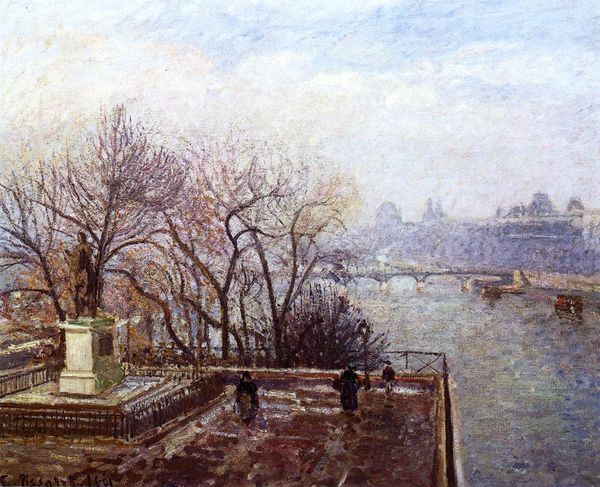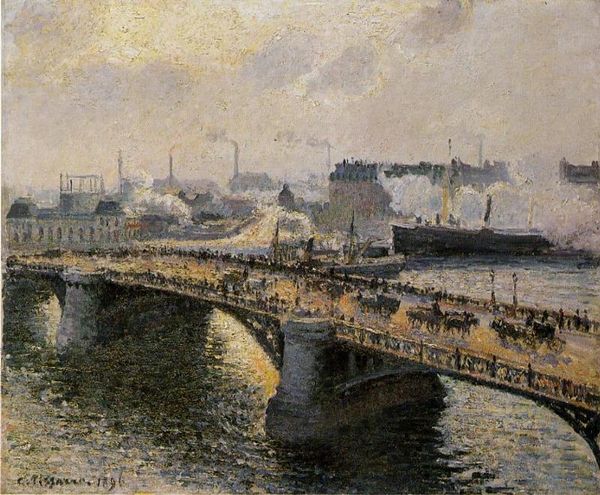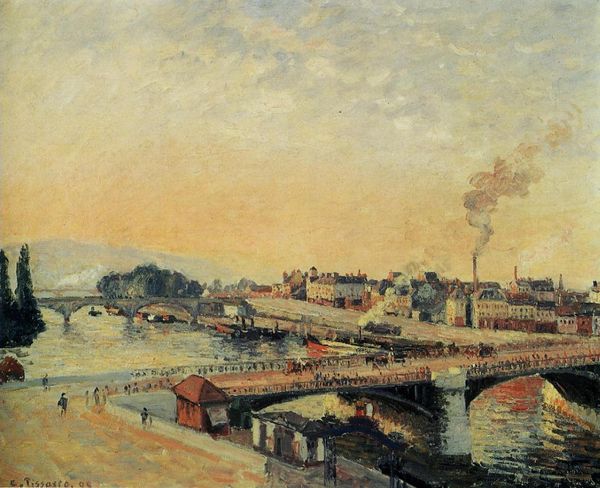
#
sky
#
abstract painting
#
impressionist landscape
#
possibly oil pastel
#
oil painting
#
fluid art
#
acrylic on canvas
#
underpainting
#
seascape
#
water
#
painting painterly
#
watercolor
Dimensions: 54 x 65 cm
Copyright: Public domain
Curator: Standing before us is Camille Pissarro’s "The Louvre, March Mist," painted in 1903. The piece currently resides at the Ny Carlsberg Glyptotek in Copenhagen. Editor: Wow, the air in this piece feels thick and cold. It’s like looking at Paris through a dampened lens. I can almost feel the mist clinging to my skin! There's a real stillness to it, a muted harmony. Curator: Pissarro, though often overshadowed by Monet and Renoir, was a crucial figure in the Impressionist movement. He depicted ordinary life and landscapes with a focus on light and atmosphere, and he often did several views from the same point in different seasons. Editor: Exactly! You can almost smell the damp earth. I love how the blurred edges of the Louvre melt into the hazy sky; it feels more like a dream than a photograph. But the trees…there's this feeling of winter hanging on. Is that just me? Curator: Not at all. Pissarro was interested in capturing the transient effects of weather, particularly during the changing of seasons. It shows his commitment to recording observed reality as truthfully as possible; "objective perception", you could argue, was his artistic project. You also see that concern mirrored in scientific approaches to perception. Editor: True! And in a way, it highlights the monumentality of The Louvre, contrasting its grand architectural mass with something almost ephemeral, this delicate, vanishing mist. It really plays on that juxtaposition, right? Is there some hidden socio-political thing going on there? Curator: Certainly, Pissarro was interested in modern life and his work always carries at least some commentary. The juxtaposition also reminds us of the social space occupied by public buildings as they mediate private and communal experiences, a popular subject of discussion in French artistic and political circles in the 1890s. Editor: Mmm...okay, sure. Still, I just feel this overwhelming… gentleness here, that softens the rigid angles of the palace in the distance and lets the eye breathe. It makes me want to wrap up in a cozy scarf and linger there a bit longer! Curator: And on that comforting note, we can move forward appreciating how an artist can let us inhabit the reality of others through his perceptive exploration. Editor: Indeed! It gives one plenty to ponder, doesn’t it? Time for a pastry, maybe.
Comments
No comments
Be the first to comment and join the conversation on the ultimate creative platform.
